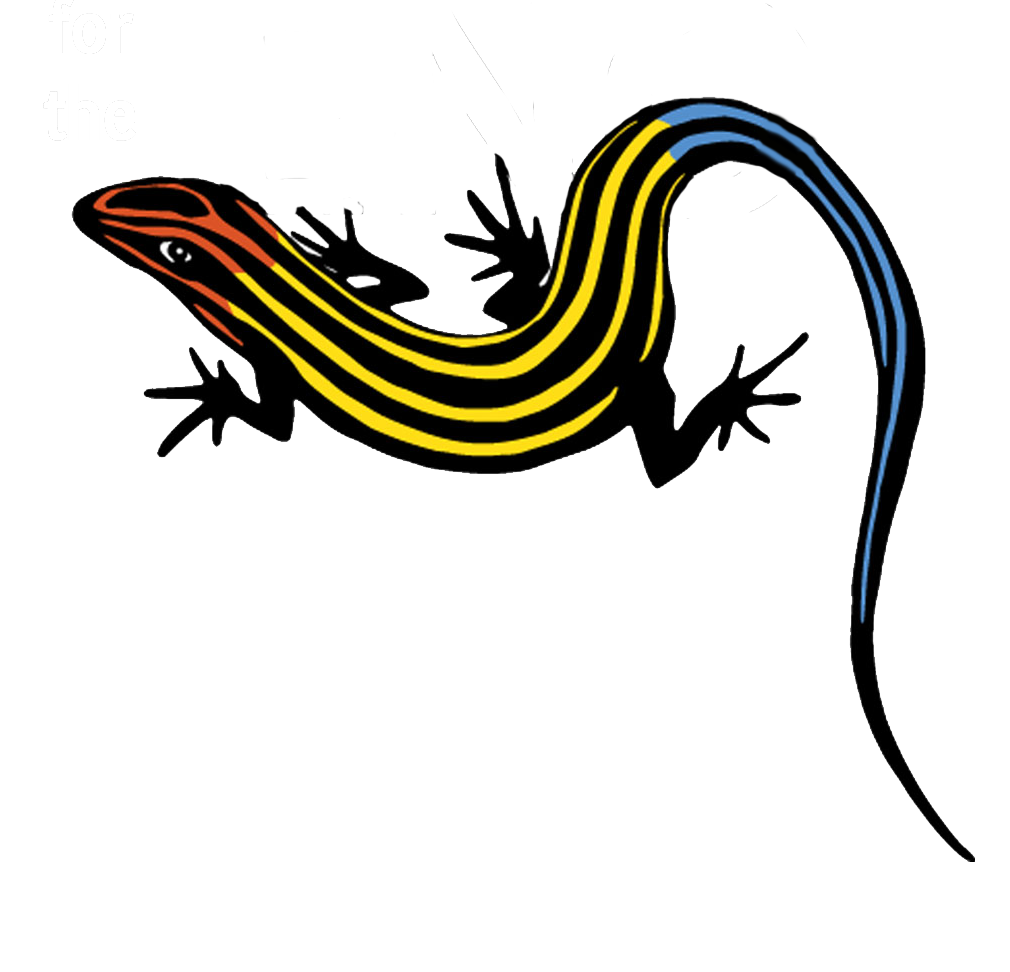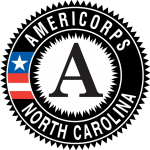ENO Journal
Volume 4, No. 1
-Ken Moore
Spring 1976
Known for years for its profusion of colorful wildflowers, the Eno River is visited by both long-time nature lovers and new enthusiasts responding to the striking seasonal displays along the numerous well-walked river trails. The Eno’s variety of distinctive habitats, which accounts for the large number of different native plant species, also affords the perceptive hiker opportunity to observe and identify over twenty different types of native ferns.
Unlike most woodland herbaceous plants, ferns do not have flowers to produce reproductive seed and are thus not readily noticed nor identified. Ferns reproduce bv means of dust-like particles called spores contained in structures called sporangia which in turn appear as clusters called sori; sori are arranged in various designs on the lower surface of fern fronds (leaves) or on specialized fronds modified specifically for carrying spore clusters and often bearing no resemblance to a normal frond. Round, kidney-shaped or linear sori arranged on the underside of the frond along veins or leaf margins provide diagnostic characters which aid in the identification of various species. Many ferns display sterile fronds (those without sori) and fertile fronds (those with soil) which are very similar in appearance. Other species are dimorphic, i.e., they have two distinctive types of fronds; the ferule fronds are slightly modified in appearance, or completely modified so as to have no similarity at all to the normal sterile fronds. Many gardeners and native plant enthusiasts have been alarmed at observing the brown or black sori on the backs of their ferns thinking them some disease or insect attack and with relief have learned it to be only a healthy function of the plant.
Armed with a little awareness of the structures of these green, flowerless plants, and aided perhaps by a small illustrated identification guide, concentrate your awareness during your next Eno excursion on the variety of ferns along familiar trails. Appreciate the beauty of a single square foot of space occupied by an ebony spleenwort nestled within the crack of a rock ledge, a beauty which gardeners spend hours of effort in effort of duplicating but never succeeding quite so well. Notice also that certain ferns occur characteristically in certain types of habitats, some associated with dry sites and others associated with wet sites.
Evergreen Species
One of the most frequently encountered ferns along the Eno is the Christmas fern (Polystichum Acrostichoides) with evergreen fronds. In the past the green leaves were gathered by New England settlers during the Christmas season for greenery indoors; many youngsters sec in the general outline of the frond, a Christ m:is tree shape, and others see in the outline of a single leaf division (pinna) the inage of Santa’s stocking. Most fern fronds are compound, i.e., they are characterized by smaller leaf segments (pinnae) attached to the main axis (rachis) of the blade. A frond with one set of pinnae is pinnately compound or 1-pinnate. If the individual pinnae arc again divided into smaller segments (pinnules) the frond is bipinnately compound or 2-pinnatc, and the next division is 3-pinnate. Our Christmas fern is I-pinnate. An abundance of Christmas fern generally indicates a rich, well drained soil situation where moisture is available most of the year.
The easily recognized, diminutive Ebonv Spleenwort (Asplemium platyneuron) is characterized by a dark,brown, wire-like rachis, the sterile fronds lying close to the ground and the fertile fronds being longer and standing erect. The 1-pinnate fronds gradually taper at the base as the individual pinnae become smaller and smaller. This beautiful fern, so often found in terraria, is generally encountered everywhere, on rocky ledges, in pine and deciduous forests and in open fields. The Spleenwort genus, Asplenium was named by Linnaeus for an ancient plant credited for curing diseases of the spleen.
Mountain Spleenwort (Asplenium montanum), found primarily in the mountains of our state, is another Asplenium found along the Eno. Hidden under rock ledges along our river, It is a very unusual fern for this eastern piedmont area of the state, and it is relatively small and will go unnoticed unless your attention is keen along the particular rock ledges where it is hiding.
A third Asplenium, and easily one of the most unusual, is the Walking Fern (Asplenium rhizophyllum) famous for its habit of literally climbing step-by-step over moss-covered limestone and other non-acid types of rock formations. The leaf blade is simple. Without multiple divisions, and frequently situated at the end of its long tapering frond is a tiny new fern, a complete fern in miniature, the result of vegetative reproduction (reminding one of the plantlets formed along the margins of some species of greenhouse Kalanchoes). As each new fern becomes established, it sends out another long leaf lip upon which another fern develops and thus it walks.
The Polypodiums, so named because of their exposed rhizomes or rootstalks climbing over rocks or tree limbs like little feel, are represented along our river trails by two small evergreen ferns. The Resurrection fern (Polypodium polypodioides) the smaller of the two, is usually seen perched on the limbs or trunks of rough-barked, large trees, appearing very shriveled and dead during hot and dry periods and responding with a fresher, greener aspect when moisture is in the air; the larger Rock Cap Fern (Polypodium virginianum) is generally found sprawling over rocks and is distinguished from from the first by the absence of gray or brown scales on the undersurface of the frond which are so evident on the smaller Resurrection Fern. Don’t be surprised, however, to find either one on rock or tree. Thoreau wrote reverently of the Rock Caps for their fresh green tenacity during the harsh, bleak periods of the New England winters.
The largest evergreen fern found in some of the richest forested areas of the Eno is the beautiful Marginal Shield Fern (Dryopteris marginalis) characterized by its large 2-pinnatc leaves situated in a circle or crown arrangement atop its rootstalk. The sori resembling large dots arc situated on the outer edge of the lower sides of the frond segments. Like the Mountain Spleenwort, the Marginal Shield Fern is more common in our mountain counties and is an exciting find in our area.
Our last fern evident during the winter months is another rarity. The American Climbing Fern (Lygodium palmatum) found in low, moist sites resembles a vine more than a fern. It is characterized by small sterile fronds shaped like fat little hands with a couple of extra fingers; the fertile fronds are more threadlike.
Deciduous Species
As Spring weather becomes a reality, the Eno woodlands are enlivened by clusters of new fern fronds (fiddleheads or croziers) literally uncurling from the leaf litter which protected them during the winter. The color, form and texture of the fiddlehcads, different for each of the fern species easily rival the more cunningly observed, colorful wildflowers in charm and beauty and provide a wealth of close-up photographic material.
Perhaps the most striking of all ferns in early Spring is the Cinnamon Fern (Osmunda cinnamonea) (characterized by tall fiddleheads densely covered with cinnamon-colored, wooly fuzz. The fiddleheads expand into large 2′-4′ tall pinnate leaves arranged in a circle. From the midst of these arise slender, cinnamon-colored fertile fronds looking quite unlike normal fern fronds. Those reproductive structures wither soon after full development of the spore cases. The Cinnamon Fern grows in very moist areas in sun or shade, as docs its close relative, the Royal Fern (Osmunda regalis var. spectabilis). The large fronds of Royal Fern look more like a giant locust leaf than a fern. Its sporangia are borne in clusters at the tips of what otherwise appear to be normal sterile fronds.
A distinctive yellow-green fern frond growing in dry or wet areas is the New York Fern (Thelyptcrisnovcboraccnsis) exhibiting a pinnate frond which is noticeably tapered at both ends, the lowest pinnae appearing as no more than small bracts or scales along the rachis of the leaf.
A familiar favorite is tlie lacy Maidenhair Fern (Adiantumpedatum) characterized by a slender smooth black rachis which holds its frond segments horizontal to the ground and vaguely resembles a multi-fingered hand. Look for it along the slopes of shady humus-rich woods.
Two deciduous ferns often confused with one another because of the similarity of their sterile fronds and their preference for wet habitats are the Sensitive Fern (Onocleasensibilis) and tlie Netted Chain Fern (Wood-wardiaareolata). Their persistent fertile fronds arc the easy identifying marks. Sensitive Ferns exhibit a naked rachis with clusters of suri resembling beads grouped at the top, accounting for its often being called Bead Fern. The fertile frond of the Netted Chain Fern is characterized by leaf segments which are reduced to very narrow strips bearing linear sori in lines along the lower surface.
Southern Lady Fern (Athyrium asplenioides) exhibits large 2- or 3-pinnate leaves whose rachis is often maroon in color with a distinct groove along its upper side. It will be found in humus-rich woods and in moist woodlands.
Other fern allies allies (closely related non-flower bearing plants) reported along the paths of the Eno are cited in the check-list. Any one of the well-illustrated guides listed at the end of this issue will aid your observation and identification.
Don’t take the ferns for granted; stoop close to examine the young fiddleheads or make a photographic collection of the beautiful structures and patterns of the fertile fronds. You may seek the assistance of a long-time walker of the Eno before you can locate and recognize all of the ferns along the Eno.
*Scientific terminology follows the follows the Vascular Flora of the Carolinas, by Raddord, allen and Bell There is much disagreement concerning the correct names of many ferns, which accounts for the variety of names found throughout the various guides available. Common names are even more numerous and confusing.



